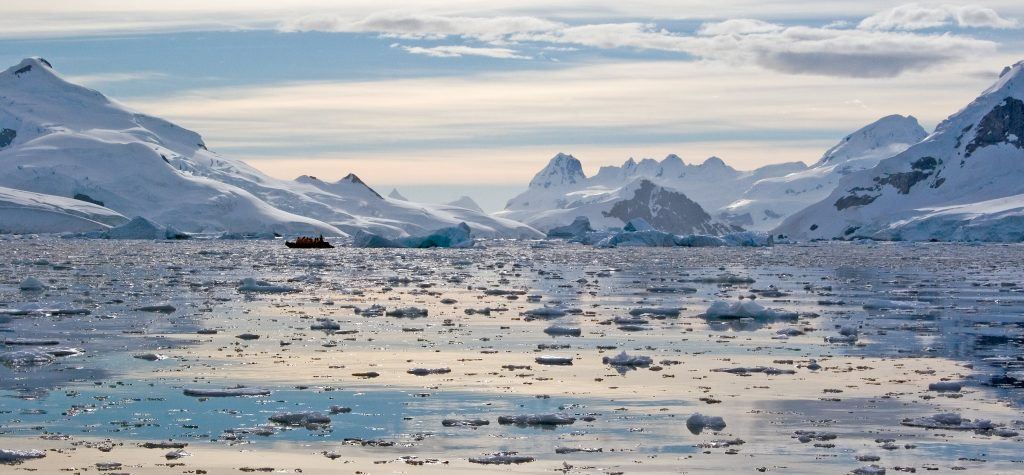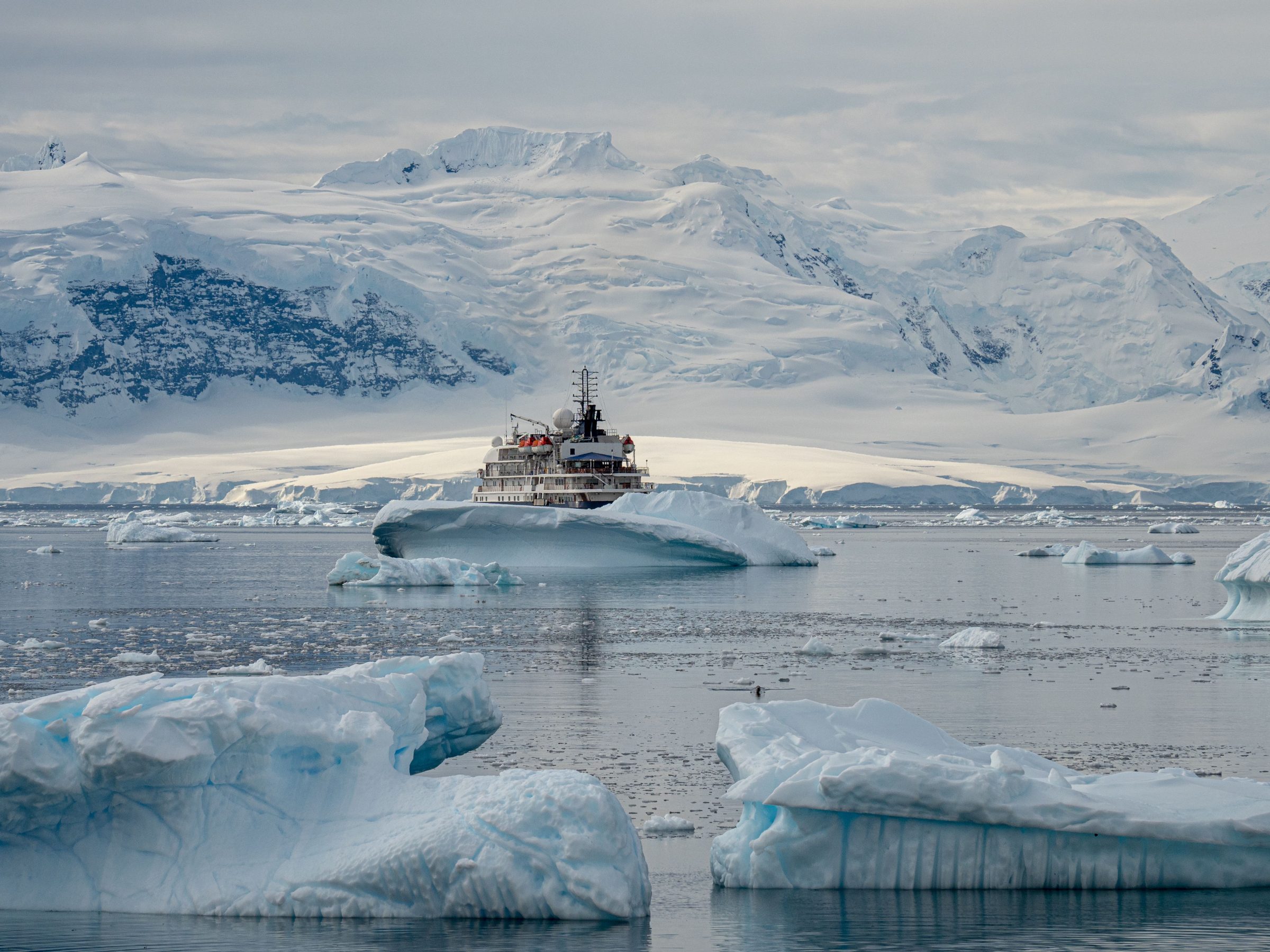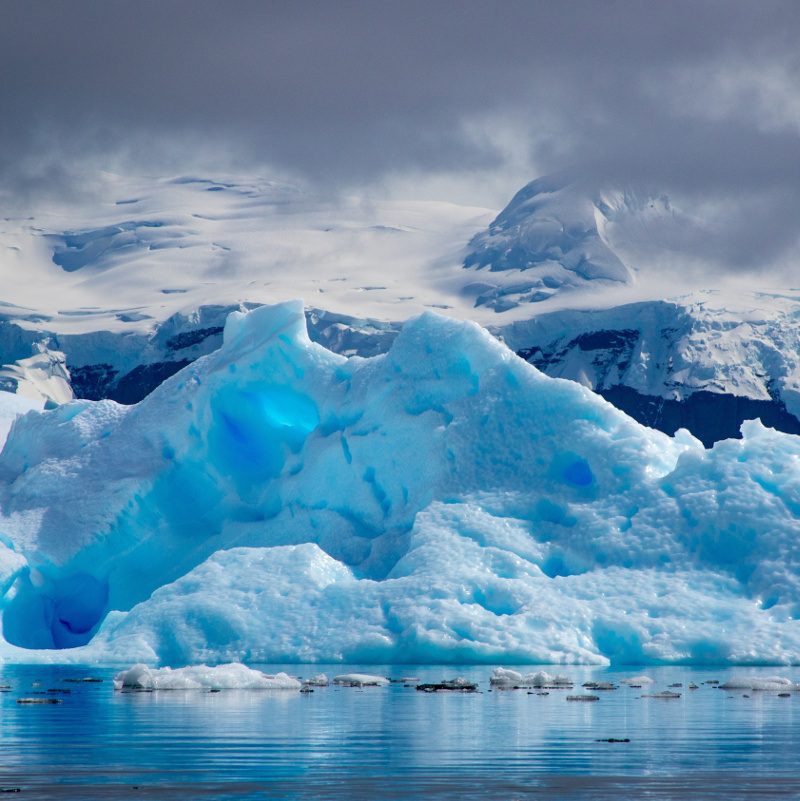Types of Sea Ice in Antarctica
One of the first things you might think of when you think of Antarctica is likely ice, and lots of it. They don’t call it the ‘great white continent’ for nothing, and there’s more sea ice there than any place on earth. But did you know there are many, many different kinds of sea ice?
Sea ice comes in a wide variety of shapes and forms, depending on its stage in development as well as a number of environmental and meteorological conditions. Let’s take a closer look at the types of ice you’ll discover in Antarctica.

Sea Ice enhances the beauty of Antarctica
Icebergs
Icebergs are large floating masses of freshwater from glaciers or ice shelves that have broken. You can recognize tabular icebergs as they are flat-topped and show banding where they calved.
Pancake Ice
Named for circular pancake-like slabs, this sea ice is created through wind and wave action. Pancake Ice will combine with icy slush to become wider and raft with others to become thicker. Eventually the pancakes freeze together into larger floes or solid ice.
Nilas Ice
This is an early stage in the development of new sea ice. Nilas ice is a thin elastic crust of ice, bending easily around waves and swells without breaking, and forming a pattern of interlocking ‘fingers’ up to 10 cm thick.
Young Ice
Young Ice is in the transition stage between nilas and first-year ice, measuring 10-30 cm in thickness.
First-Year Ice
Sea ice of not more than one winter’s growth and has developed from young ice. It measures 30 cm or greater.

Old Ice
Old Ice is sea ice that has survived at least one summer’s melt. It is generally smoother in appearance than first-year ice.
Bergy Bits
The most fun to say, ‘bergy bits’ are pieces of floating ice that are less than 5 meters high and 10 meters across.
Growlers
A growler is a piece of floating ice that is almost awash. Smaller than bergy bits, growlers can be dangerous as they are difficult to see and very hard.
Drift Ice
Drift Ice are pieces of floating sea ice that are 20m or more across.
Brash Ice
Brash Ice is the ‘wreckage’ of other sea ice, smaller pieces of sea ice that have broken off and are not more than 2m across.

Pack Ice
When drift and brash ice are driven together by wind and currents it creates Pack Ice.
Fast Ice
This is ice that quickly forms and remains attached to the shore, or to an ice front such as an ice wall, shoals, or iceberg.
Floe
An ice floe is any relatively flat piece of ice 20m or more across. Floes are subdivided by size:
- Small: 20-100m across
- Medium: 100-500m across
- Big: 500-2,000m across
- Vast: 2-10km across
- Giant: Greater than 10km across
Who knew there were so many different types of sea ice? Now that you are informed, you can show off this new knowledge to all your fellow passengers on your very own voyage to Antarctica.
More questions?
Reach out to our team any time!
